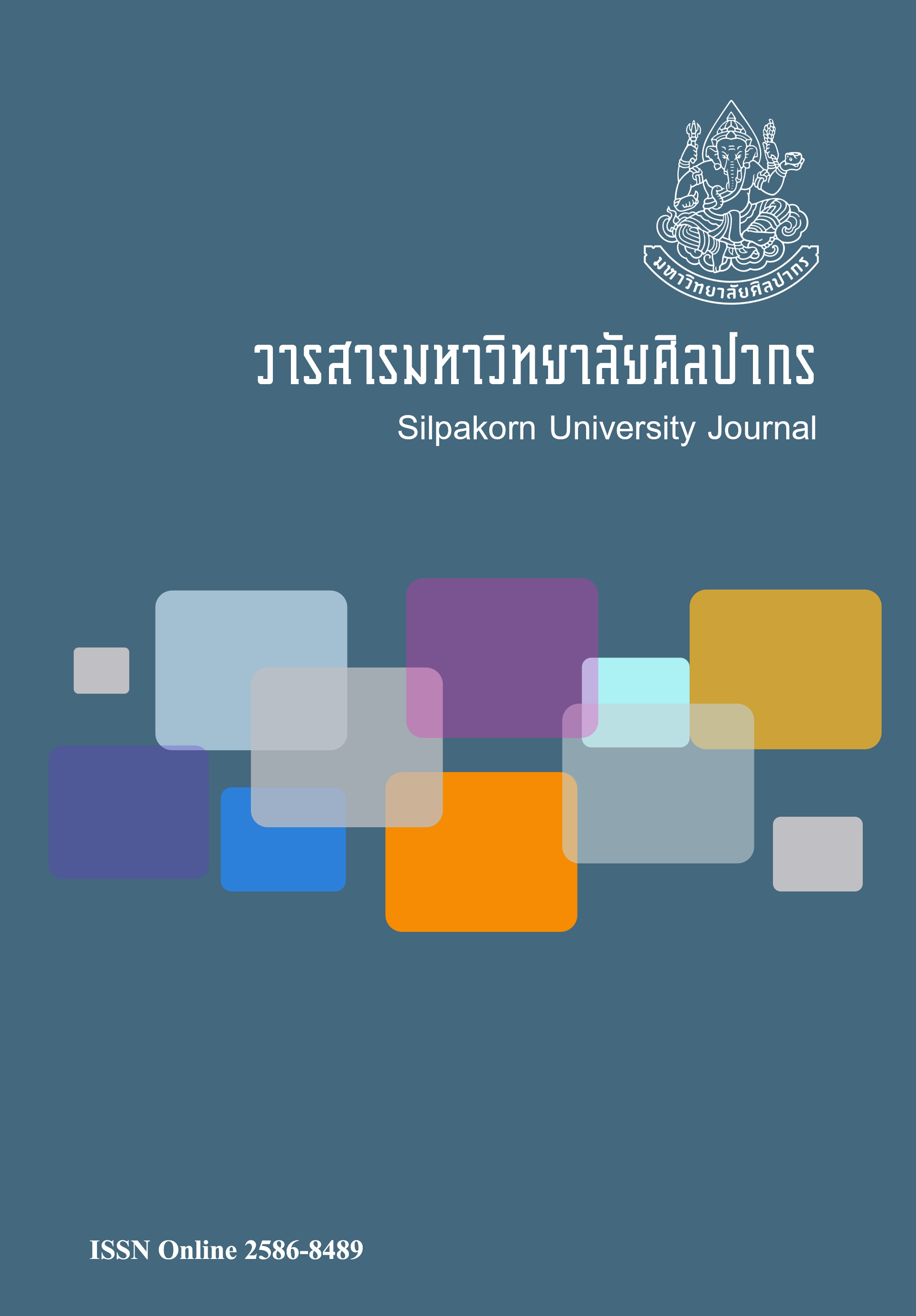แบบจำลองสมการโครงสร้างเพื่อการทำนาย (Structural equation modeling for prediction)
Main Article Content
Abstract
บทความนี้มีวัตถุประสงค์เพื่อนำเสนอองค์ความรู้การวิเคราะห์สมการโครงสร้างเพื่อการทำนาย ด้วยข้อมูลของตัวแปรสังเกตได้หลายๆ ตัวแปร ที่สามารถทำนายที่ส่งผลหรือมีอิทธิพลต่อตัวแปรแฝง (latent variable) ที่ตัวแปรแฝงนั้นวัดได้จากตัวบ่งชี้ ได้หลายตัวแปร ขั้นตอนการการวิเคราะห์แบบจำลองสมการโครงสร้าง (Structural Equation Modeling: SEM) ที่เริ่มด้วยการนำข้อมูลจากโปรแกรม Statistical Package for the Social Science for Windows (SPSS) และทำการวิเคราะห์แบบจำลองสมการโครงสร้าง (Structural Equation Modeling: SEM) ด้วยโปรแกรม LISREL หรือ Analysis of Moment Structure: AMOS ที่ต้องมีขั้นตอนสำคัญ ได้แก่ การเตรียมข้อมูลดิบ การระบุ โมเดลหรือวาดภาพโมเดลจากการวิจัย การกำหนดการแสดงผลการวิเคราะห์ การวิเคราะห์โมเดล และการปรับโมเดล โดยค่าสถิติที่ได้จากการแสดงผลของตัวแปรสังเกตได้ที่มีผลต่อตัวแปรแฝง (latent variable)
The objective of this article was to present the structural equation modeling for prediction based on observable variables which can predict or have effects on latent variables. The analysis of the structural equation modeling (SEM) starts from retrieving data from statistical package for the social science for Windows (SPSS), analyzing the structural equation modeling (SEM) using LISREL or Analysis of Moment Structure (AMOS). The necessary steps include preparing raw data, constructing a model or picturing a model based on research, deciding model presentation, analyzing the model, and adjusting the model based on the statistics of observable variables which have effects on latent variables.
Downloads
Article Details
References
Songsraboon, R. (2016). Model of total service quality, market orientation and marketing innovation towards performance of private hospitals in Thailand. Dissertation. Siam University, Bangkok, Thailand.
Anderson, J. C. & Gerbing, D. W. (1988).Structural equation modeling in practice: A review and recommended two-step approach. Psychological Bulletin,103, 411-423.
Bollen, K. A. (1989). Structural equations with latent variables. New York: Wiley.
Joreskog, K.G., & Sorbom, D. (2012). LISREL 9.1: LISREL syntax guide. Chicago: Scientific Software International.
Marcoulides, G. A., & Schumacker, R. E. (2001). New developments and techniques in structural equation modeling. New Jersey: Lawrence Erlbaum Associates.
Mulaik, S. A., & Millsap, R. E. (2000). Doing the four-step right. Structural equation modeling, 7, 36-73.
Schumacker, R. E., & Lomax, R. G. (2010). A beginner’s guide to structural equation modeling (3rd ed.). New Jersey: Lawrence Erlbaum Associates.
Tenko. R.,& Marcoulides, G. A. (2006). A first course in structural equation modeling (2nd ed.). New Jersey: Lawrence Erlbaum Associates.


